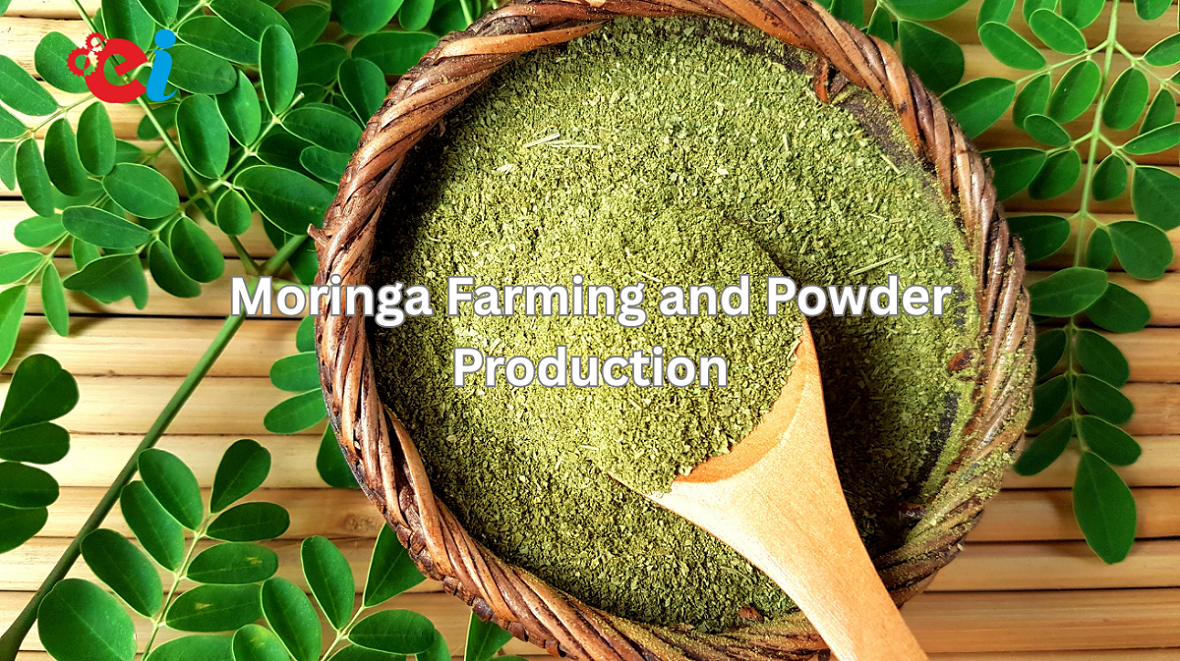Agriculture stands as the backbone of economies that depend largely on it, and crop diseases threaten food security as well as the wellness of farmers. Unpredictable weather patterns, pest infestations, and soil degradation often leave farmers with little or no tools for the early detection of diseases, eventually causing damage to crops. The AI-based detection of diseases in crops promotes efficiency, speed, and accuracy when dealing with exceptional threats to farmers in the field. In this article, we look at artificial intelligence’s significant influence in revolutionizing agriculture to prevent losses before crop diseases manifest.
The Role of AI in Agriculture
AI is fast becoming part of the agricultural society that aims at efficiency and sustainability. AI-enabled solutions capture the machine learning-modified computer vision and the big-data analytic capabilities to do crop health analysis and predict damages that could strike. With a large amount of data generated from the agribusiness, AI will help detect crop diseases early, optimize pesticide application, and further enhance the crop yield.
AI-driven tools collect data in real time via sensors, drones, and smartphone applications. These technologies analyze images of crops, identify signs of infection, and recommend the appropriate actions to mitigate risks. Not only is this fast-tracking possible, but it also reduces dependence on guesswork and physical inspection.
Related Article: Organic Farming and Biofertilizer Production
How Does AI Detect Crop Diseases?
These technologies are applied together to provide accurate assessments of AI-based crop disease detection. The mentioned advanced technology is
1. Computer Vision and Image Recognition
An AI image recognition system identifies disease symptoms like leaf spots, discoloration, or deformity by scanning crop images.
Farmers upload images through mobile apps, and the system analyzes them using the largest database of plant diseases before diagnosing.
It quickly and accurately delivers a diagnosis without requiring expert intervention.
2. Machine Learning Algorithms
These models can identify patterns of healthy and diseased crops based on historical data. It has been trained to work on extensive datasets of diseased and healthy plants. AI continually improves its accuracy based on experience over time, making the detection of diseases more and more reliable.
3. Remote Sensing and Drones
Drones flying multispectral as well as hyperspectral cameras take images over enormous farm areas. These images, when analysed by AI, detect any anomalies proven to identify disease outbreaks. Unlike other methods, these scan thousands of acres within minutes and share real-time insights with farmers.
4. Internet of Things (IoT) Sensors
IoT devices placed in the fields can monitor the environment in terms of temperature, humidity, and moisture levels in soil. This data is grouped according to the pattern for which diseases occur and then analysed by AI for predictions for an outbreak even before symptoms show.
Purpose of AI in Crop Disease Detection
1. Early Detection and Prevention
AI allows farmers early detection of a disease and prevents its propagation, thus intervening to limit damage to crops; consequently, farm productivity improves.
2. Holding Back Pesticides and Fertilizers
Traditionally, the use of pesticides involves very high doses, leading to financially draining costs and environmental degradation. AI reduces the use of pesticides to when necessary, therefore supporting sustainable agricultural practices.
3. Enhanced Production and Quality
Healthy crop provisions guarantee high production yields and better quality. AI investigates the conditions affecting optimum growth; therefore, the farmer will sell at a better price at the market, and better food security can be attained.
4. Saves Time, Labor, and Money
Identifying diseases manually is a slow and laborious process. Automated AI helps to cut down monitoring in the field, allowing farmers to concentrate on other things.
5. Data-Driven Decisions
AI transforms real-time data into actionable intelligence so that farmers can make decisions for irrigation, fertilization, and pest control on time. Hence, their farming strategies are maximized for extreme efficiency.
Similar Blogs: AI and Ethics: Navigating the Complex Landscape of Artificial Intelligence
Challenges of AI Adoption in the Agriculture Sector
It has its benefits, though implementing AI in agriculture has its fair share of challenges:
1. Huge Capital Investment
Such advanced AI tools, drones, and IoT sensors require huge investments, which small-hold farmers without government support for any kind of subsidy find it very hard to go as an active farmer.
2. Lack of IT Education among Farmers
Most farmers, especially in the developing world, do not have the technical know-how to operate AI-driven tools. Hence the need for user-friendly interfaces and training programs adopting it on a mass scale.
3. Problems Relating to Data Collection and Infrastructures
AI’s resources will become constrained. There are poor interconnects on the slow internet available and no data-collection infrastructure in rural areas that have the success of it.
4. They Will Keep Improving and Adapting
In other words, it’s going to keep improving and adapting as new diseases get created, and new ones will have to come down to train continuously to ensure that an agro-and environment will have detection accuracy about diseases that decrease over time without retraining.
Stories of success in AI agriculture
There are stories of success in AI agriculture. Today, many applications of AI around the world are helping farmers in the following ways:
1. Plant Village between USA and Africa
Plant Village is an AI app that helps farmers detect diseases in their crops through images taken from their smartphones and promotes real-time recommendations about actions to be taken to prevent further spread. It was developed by Pennsylvania State University for farmers primarily in Africa.
2. Microsoft AI for Agriculture (India)
Microsoft and the Indian government have partnered to roll out AI for bringing solutions to the hands of low-scale farmers. The AI system will be able to predict the outbreak of diseases on the cropping system when the weather patterns change, and it will help in taking preventive measures by farmers beforehand.
3. TensorFlow for Crop Disease from Google
These models developed by using the new AI platform TensorFlow from Google can detect plant diseases with more than 90% accuracy when they are fed to their respective applications for use by farmers while on the move.
4. Indigenous AI Solutions for Drones in China
The application of AI drones has enabled farmers in China to target and spray critical pesticides without a cut in production yield. This has led to more than a 70% reduction in the rate of pesticides on the farm.
The Future of AI in Agriculture
With the development of artificial intelligence, the increasing role of AI in agriculture will grow significantly. Future changes may embody:
1. AI Chatbots for Farmers
Farmers will get immediate disease diagnoses and farming advice, so expert knowledge will be more accessible for rural farmers.
2. Blockchain for Data Safeguarding
AI-farmed data will be safeguarded under blockchain technology, ensuring transparency and prevention from data manipulation.
3. Robotics for Precision Farming
A farm will be wholly planted with minimal human effort, from planting to monitoring disease outbreaks, by fully automated robotics enabled by AI.
4. Better AI Models for Climate-Resilient Agriculture
As climate patterns affect diseases, AI models must be reconfigured to the changing climate conditions to give farmers better predictions of diseases under extreme weather events.
Read More: Exploring the Potential of Biodegradable Product Manufacturing
Conclusion
AI-based crop disease detection revolutionizes agriculture as it allows farmers to identify diseases sooner and prevent their manifestation before they reach the damage threshold. AI, through machine learning, computer vision, and the Internet of Things, makes farming an efficient, economically sound, and sustainable practice. Even though challenges like high costs and illiteracy in the digital world remain, the future of this science for agriculture shines bright. Governments, tech companies, and agriculture organizations should work hand in hand to ensure that AI-based solutions reach every farmer so that his future is bright in food production.






